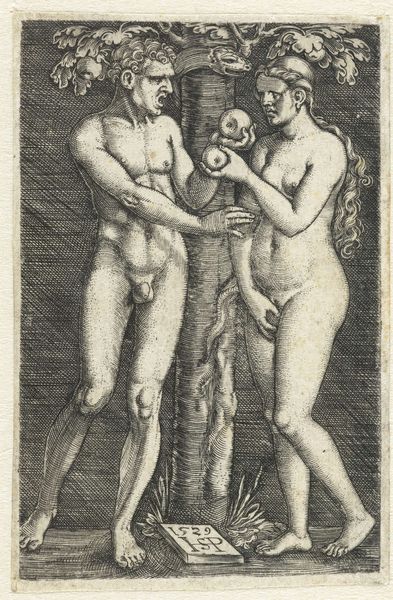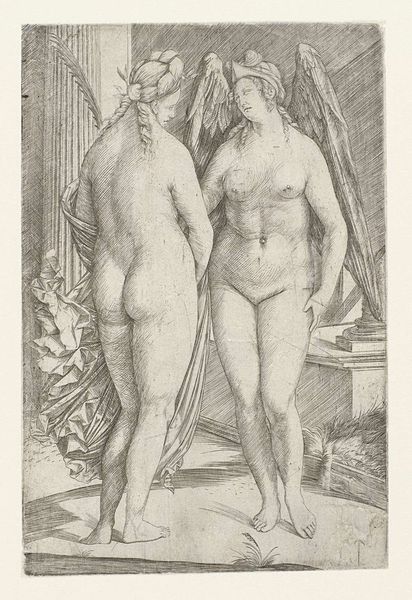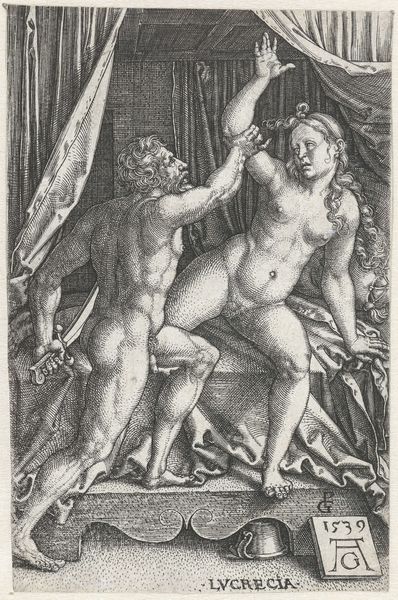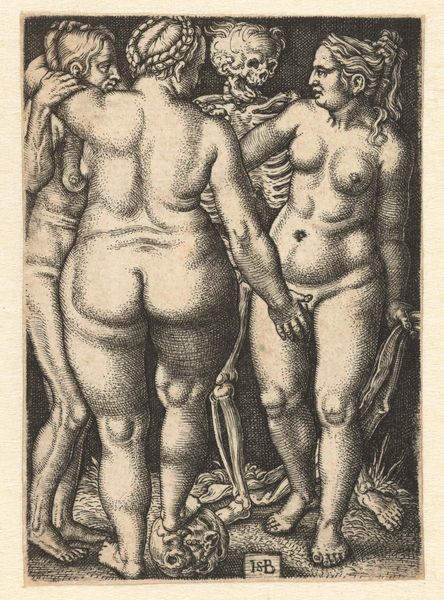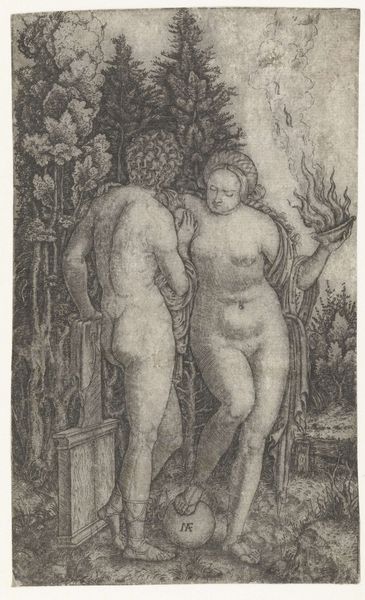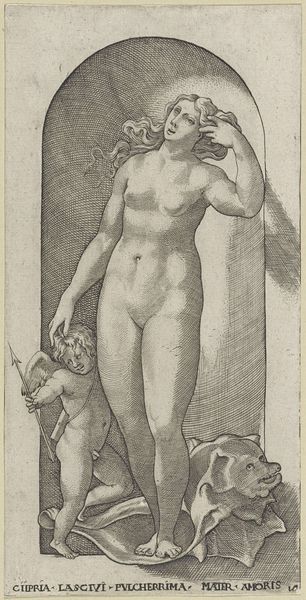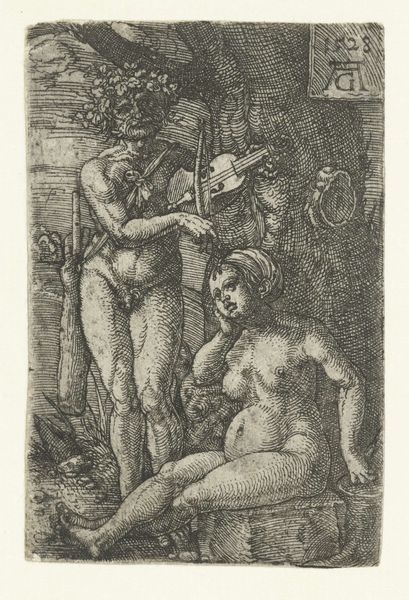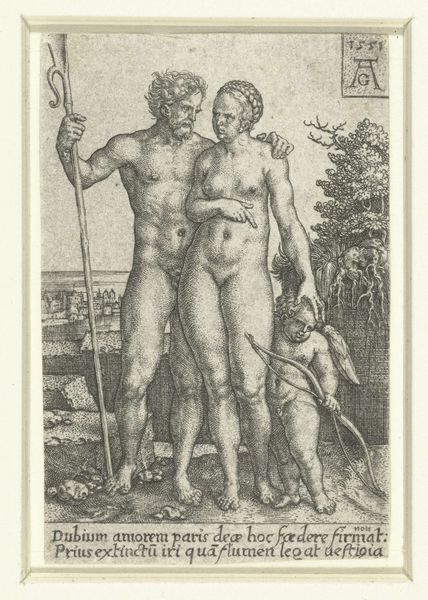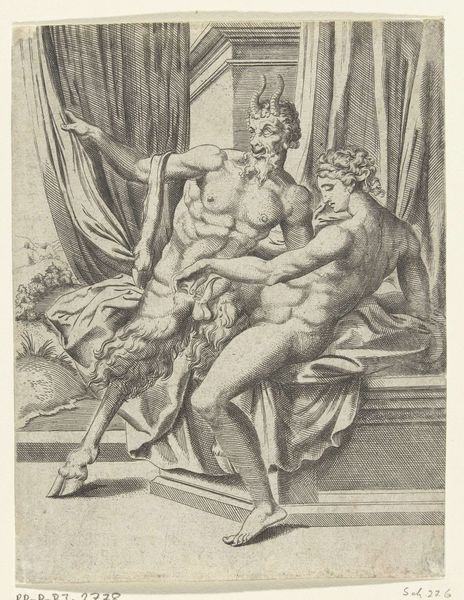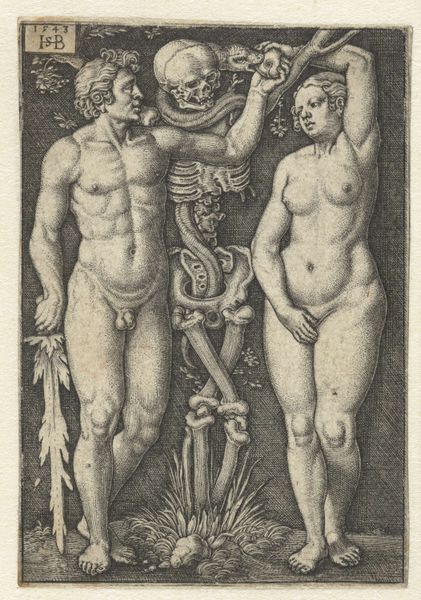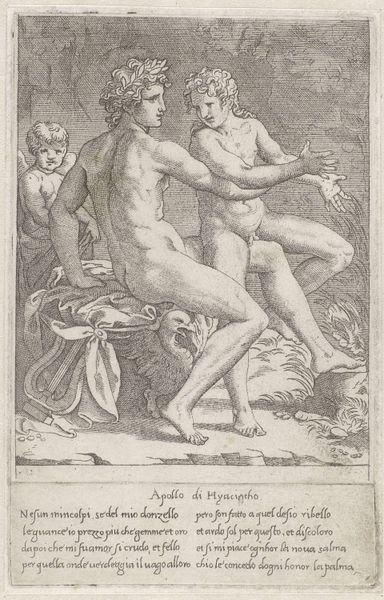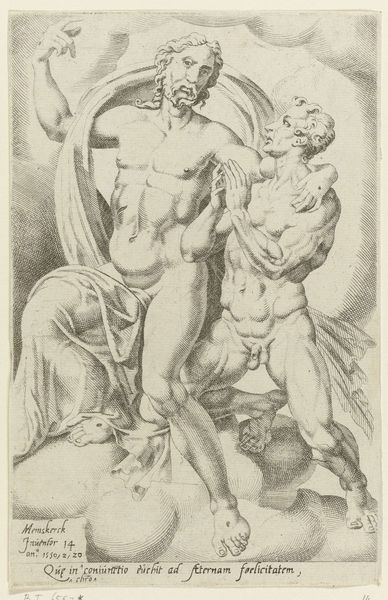
print, engraving
#
narrative-art
# print
#
old engraving style
#
figuration
#
limited contrast and shading
#
history-painting
#
northern-renaissance
#
nude
#
engraving
Dimensions: height 79 mm, width 53 mm
Copyright: Rijks Museum: Open Domain
Editor: This is Sebald Beham's "The Temptation of Adam and Eve," an engraving from 1536. It's surprisingly small, and the detail is incredible, especially the cross-hatching to create shading. I'm curious, what catches your eye about this particular depiction? Curator: What I find most compelling is the *making* of this image itself. Consider the labor involved in creating such detail, the specific tools required to meticulously carve these lines into a metal plate. This isn't just a depiction of the Fall; it’s a record of production. How does Beham, through the very act of engraving, shape our understanding of the narrative? Editor: So, it's not just the story, but the craft itself? The level of detail really speaks to skill. Curator: Precisely! And let’s consider the social context. Prints like these were a form of mass media. Who was the intended audience? Was this artwork catering to the elites, who bought these images, or speaking more broadly to emerging literacy, giving an image to their developing idea of morality and the biblical tale? How do you view Beham as speaking to his audience? Editor: That makes me think about accessibility. Prints made the image available to a wider audience than, say, a painting in a wealthy person's home. Curator: Exactly. So how does the method, that process of repeated creation and distribution, challenge conventional thoughts about high art versus craft? Editor: It's almost like early mass production of imagery. That's interesting; it's easy to forget that artistic skill involved labour and manufacturing. Thank you, that gives me a lot to think about. Curator: Indeed, and hopefully helps see prints as more than just reproductions, but objects embodying the production of both labor and meaning.
Comments
No comments
Be the first to comment and join the conversation on the ultimate creative platform.
